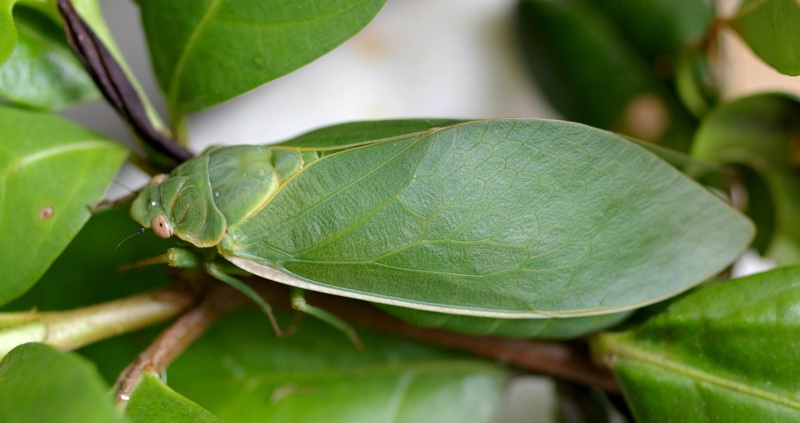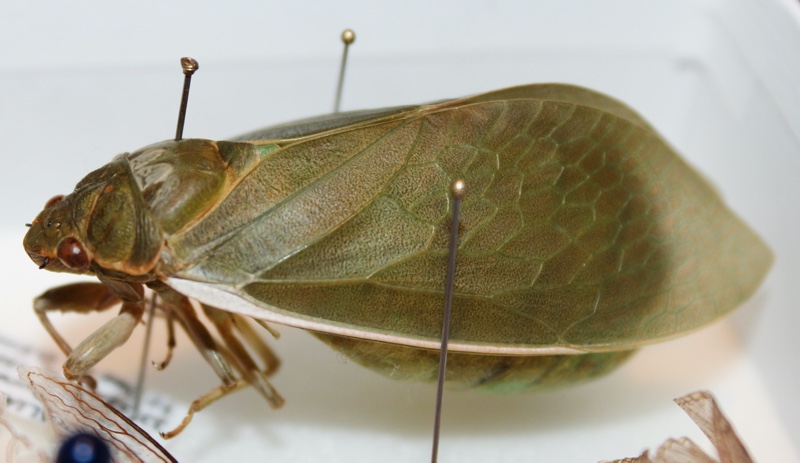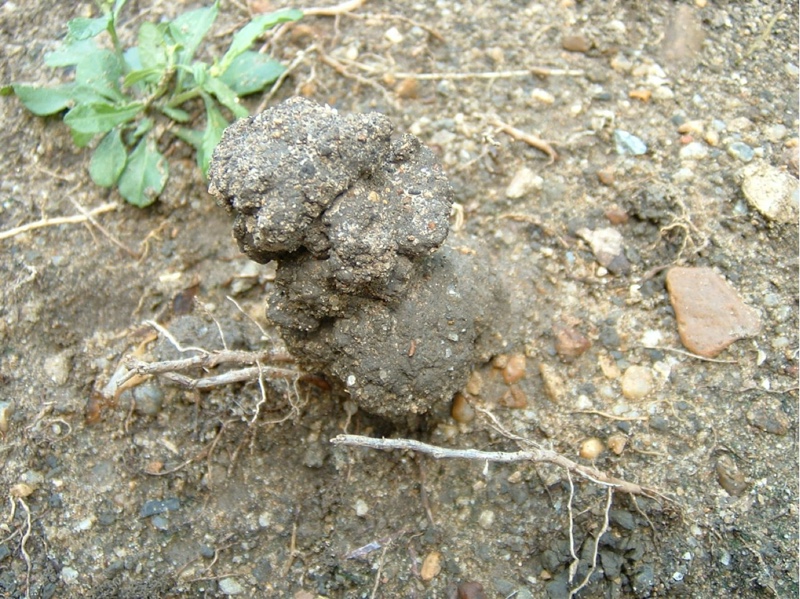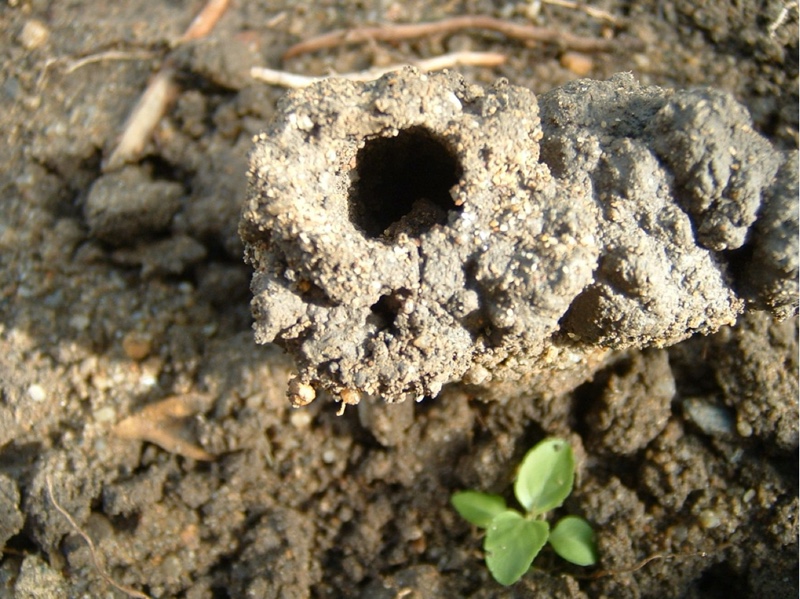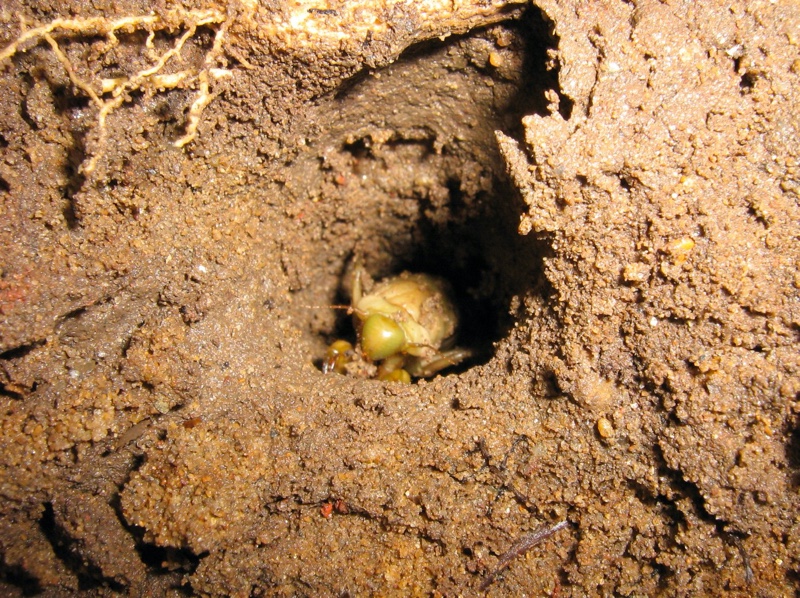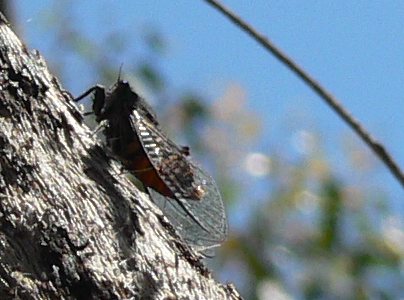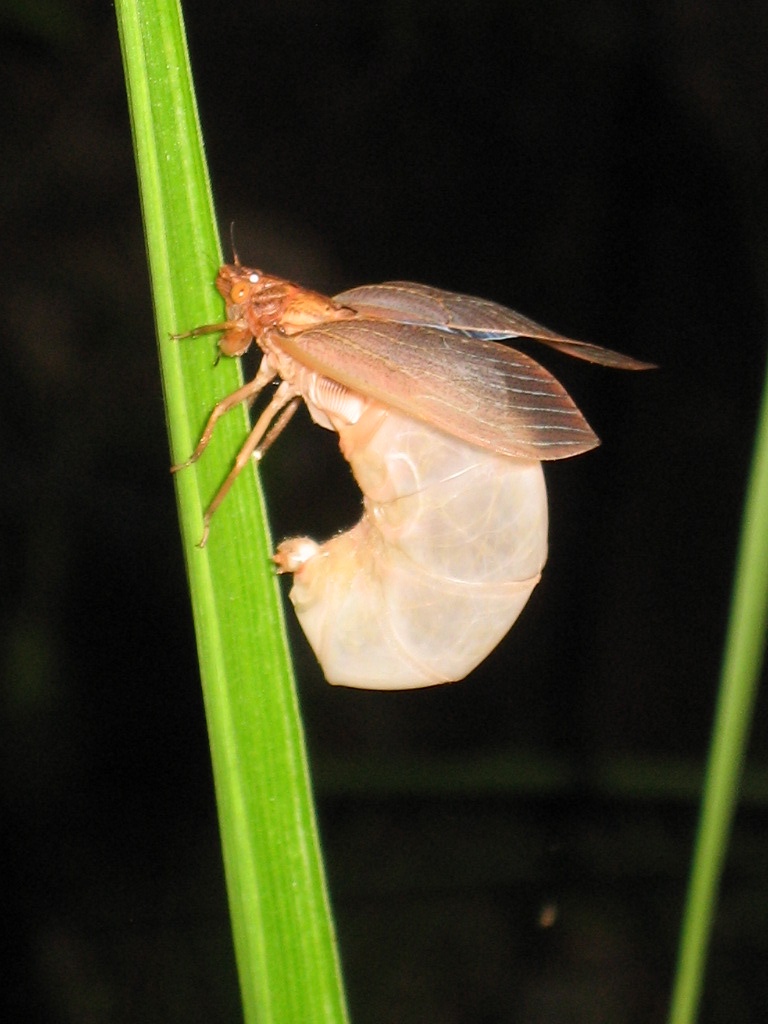Diceroprocta viridifascia aka the Salt Marsh Cicada can be found in AL, Florida, Georgia, Louisiana, Mississippi, North Carolina, South Carolina, and Virginia.
Song type: Call
Source: ©Insect Singers | Species: D. viridifascia
Song type: Call
Source: ©Joe Green | Species: D. viridifascia
These videos feature the call of the D. viridifascia.
Name, Location and Description
- Cicada Name: Diceroprocta viridifascia (Walker, 1850)
- Short Name: D. viridifascia
- Common Name: Salt Marsh Cicada
- Where it is found: AL, FL, GA, LA, MS, NC, SC, VA
- Maps: Biogeography of the Cicadas (Hemiptera: Cicadidae) of North America, North of Mexico [PDF]
- Description: Black with brown and yellow highlights, and white pruinose.
- Eye Color: gray
- Pronotal Collar Color: yellow
- Identification: Bug Guide
- Identification: iNaturalist
- Type Specimen Details: The American Museum of Natural Species
- Taxonomic Information: Integrated Taxonomic Information System
- Song: http://www.insectsingers.com/100th_meridian_cicadas/index.html
Classification:
Family: Cicadidae
Subfamily: Cicadinae
Tribe: Cryptotympanini
Subtribe: Cryptotympanina
Genus: Diceroprocta
Species: Diceroprocta viridifascia (Walker, 1850)
List of sources
- Full Binomial Names: ITIS.gov
- Common names: BugGuide.net; The Songs of Insects by Lang Elliott and Wil Herschberger; personal memory.
- Locations: Biogeography of the Cicadas (Hemiptera: Cicadidae) of North America, North of Mexico by Allen F. Sanborn and Polly K. Phillips.
- Descriptions, Colors: personal observations from specimens or photos from many sources. Descriptions are not perfect, but may be helpful.
Notes:
- Some descriptions are based on aged specimens which have lost some or a lot of their color.


